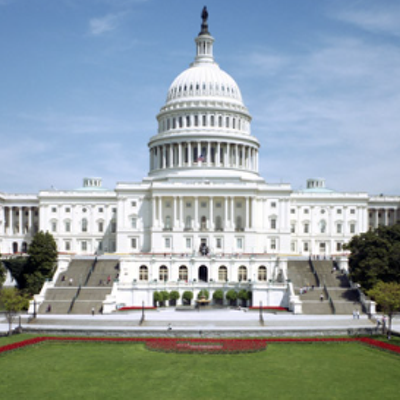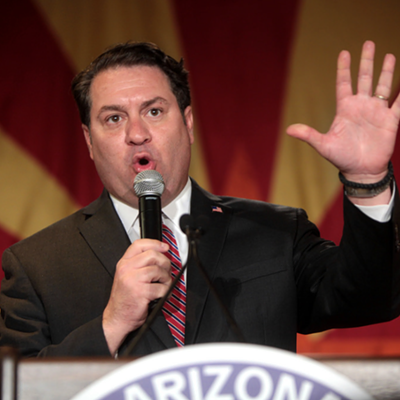MEANWHILE, BACK AT THE RANCH
Hey, wanna be a cowboy? Or a ranchette developer? Could we possibly interest you in a sprawling 82,000 acres east of Tucson?Yes, the lovely A-7 Ranch can be yours, if the price is right. The Tucson City Council, having lost its passion for running cattle, appears finally ready to unload the A-7, aka the Bellotta Ranch, which a previous council bought for $2.5 million. At the time, the city was trying to protect the ranch from being subdivided--and maybe trying to invest in some water rights, if you're a conspiracy nut. In either case, the plan was to flip the land to some environmental organization, such as the Nature Conservancy, or the county within two years.
Didn't work out that way. Now, more five years later, the council is set to cut its losses.
Republican Kathleen Dunbar opened the discussion by pointing out that, between debt service and the cost of running cattle, the city was spending somewhere around $600,000 a year at the A-7, which happens to be some 18 miles outside the city limits. And even though the ranch has been on the market, the city's demands, including a requirement of a conservation easement to prevent the property from being subdivided, weren't doing much to attract buyers. One suitor had played with paying $1.9 million, but never got past teasing city officials.
Dunbar had hoped to swing a motion that would give the city another six months before lifting the restrictions, but she squealed with delight when Democrat José Ibarra stepped up to back her even further.
"I hate to admit this in public," Ibarra said, "but I have to agree with Miss Dunbar."
The council voted unanimously to lift the conservation restrictions while selling the ranch, but reserved the right to make the final decision on the sale. If conservation groups are really interested in preserving the ranch, they'd better start looking for loose change beneath the couch cushions.
ACCESS DENIED?
The Tucson Community Cable Corporation has plenty of the quirky and pointless programming you'd expect from public access TV. When you let just about anybody pick up a camera and shoot their own TV show, you're bound to collect oddball conspiracy theorists, aspiring televangelists and other prankstas with too much time on their hands.But TCCC members have also done some fine documentary work that you won't find on mainstream channels, as well as aiding many nonprofits in developing public-service announcements and programming about their services. It has done what it's supposed to do: put the power of broadcasting into the hands of the average Joe. If the result is sometimes crappy TV, just remind yourself that The Simple Life is coming back for a second season.
With the city's ongoing budget crisis, TCCC members and staff are worried that they're on the chopping block. TCCC, originally established 20 years ago when the first cable franchise opened up in Tucson, now gets about $1 million from the city, which gets about $5 million in cable-license fees.
TCCC, which counts on the city for about 80 percent of its budget, used to get a straight percentage of the cable fees, but a few years back, the city changed the funding formula. That's meant that while the city's cable take has increased, TCCC's funding has dropped about $400,000 over the last three years, according to Sam Behrend, TCCC's longtime executive director, who hopes to avoid deeper cuts this year.
AILING MAILING
We've previously noted in this space that Congressman Jim Kolbe has happily used his franking privileges to inform his constituents about how he's fighting to secure the border--a point that he's making rather emphatically now that he's facing a challenge from the right in the form of state Rep. Randy Graf in the September GOP primary.Now e-mail wizard Steve Emerine tells us that Kolbe is again mailing out propaganda on the taxpayer dime. According to Emerine--well, we'll let the journalist-cum-politician-cum-PR guy explain it in his own words, in a letter to the editor that the Arizona Daily Star didn't see fit to publish:
I want to publicly thank Congressman Jim Kolbe for sending my father a post card to tell him: "Good News! Your prescriptions just got more affordable" and "The new Medicare approved drug discount cards are available NOW."
Although the two-color card has a smiling photo of Kolbe, mentions his name four times and was printed and mailed at government expense, I know it couldn't possibly have been politically motivated.
That's because Edward Emerine died in 1981 and won't be voting this year.
Looks like Kolbe needs to get some new voter lists.
BRIDGE OVER TROUBLED WATERS
When Mayor Bob Walkup and Pima County Supervisor Sharon Bronson made their big road deal last month, it was supposed to put an end to an ongoing transportation squabble. But it may ignite another.For years, the city had complained that the county stiffed them over a '97 bond package that was supposed to include several projects within the city limits. The county's counter-spin: The city had failed to pony up its promised share. The city won that public-relations war, especially after the county voted to spend money on southside neighborhood streets instead of widening 22nd Street.
But in the interest of regional cooperation, not to mention easing tensions before last month's county bond election, Bronson and Walkup last month signed a memorandum of understanding that the county would spend roughly $60 million on five projects, including an extension of Alvernon Way to River Road, a widening of Broadway Boulevard between Euclid and Campbell avenues, and the Kino Parkway bridge over 22nd Street.
It's the final project that may cause trouble. Ward 5 Councilman Steve Leal is now arguing that the bridge over 22nd Street should be considered a grade-separated intersection that requires voter approval under the Neighborhood Protection Amendment of the city charter.
The Neighborhood Protection Amendment, an initiative passed by voters back in the mid '80s, has never been much liked by transportation planners, who would prefer to do their things without consulting a bunch of meddlesome voters. The NPA became an issue during the city's failed 2002 half-cent sales tax election because the council voted to include three grade-separated intersections among the projects. Back then, Councilman Fred Ronstadt has even raised the question of whether the amendment would pass legal muster if it were challenged in court.
It's hard to argue that the proposed Kino Parkway bridge isn't a GSI, even if it only extends the existing bridge that now carries traffic over Aviation Parkway and the Union Pacific Railroad tracks. But it's also hard to argue that the bridge would screw up the nearby neighborhood. It would actually go a long way toward resolving the traffic nightmare that results on 22nd Street from having two stoplights--Kino and Cherry Avenue--so close to one another.
So who, outside of John Kromko, is gonna oppose this one? Honor the Neighborhood Protection Amendment and put the bridge on the ballot. It's not like Pima County is in a rush to provide the funds before November 2005 anyhow.







